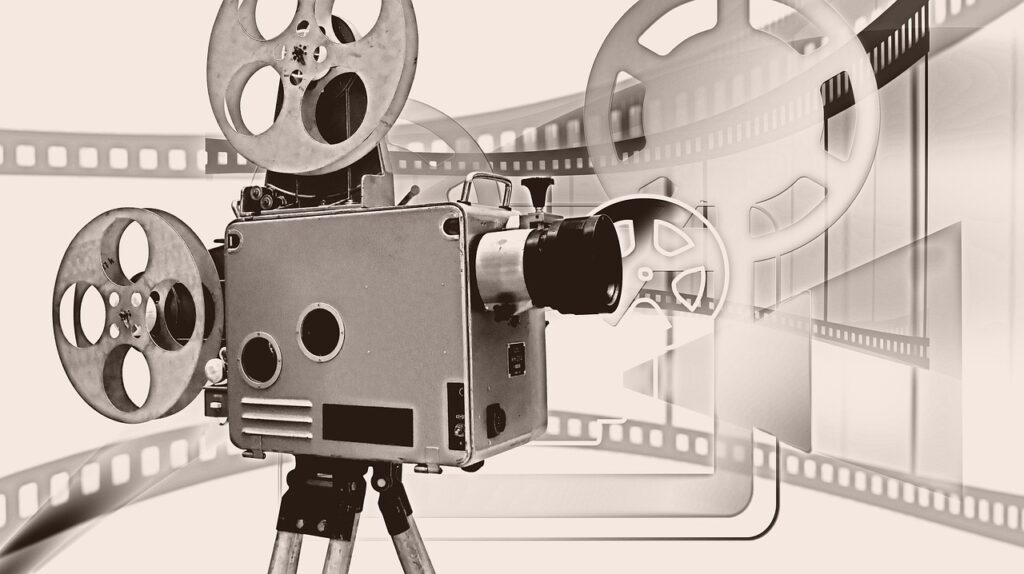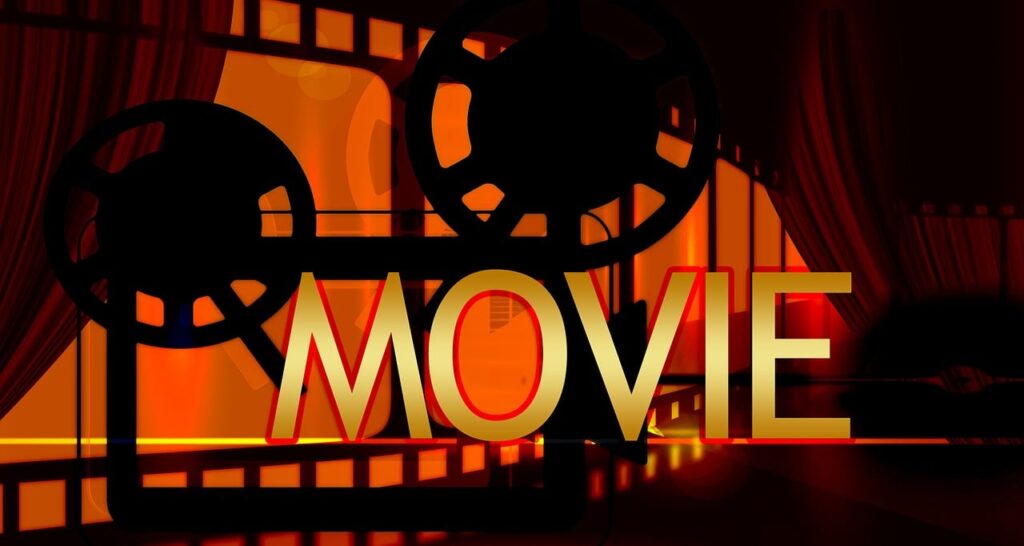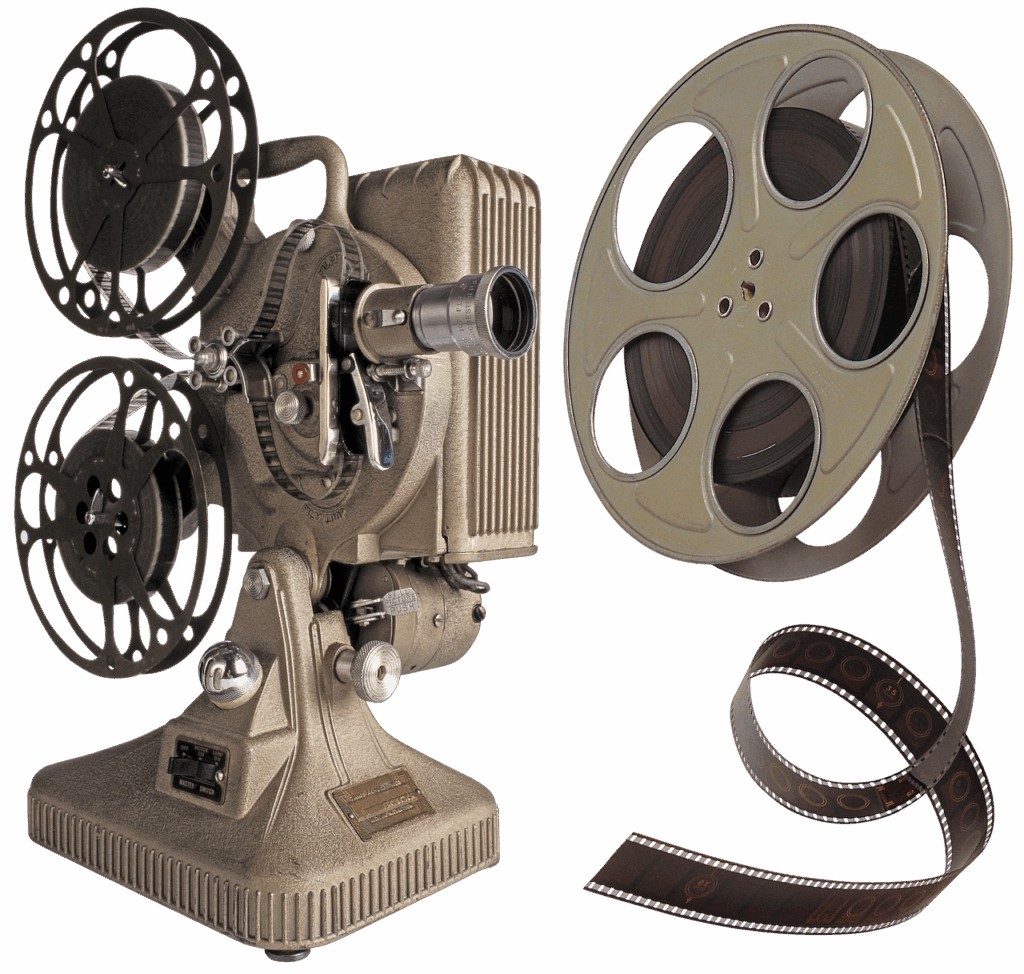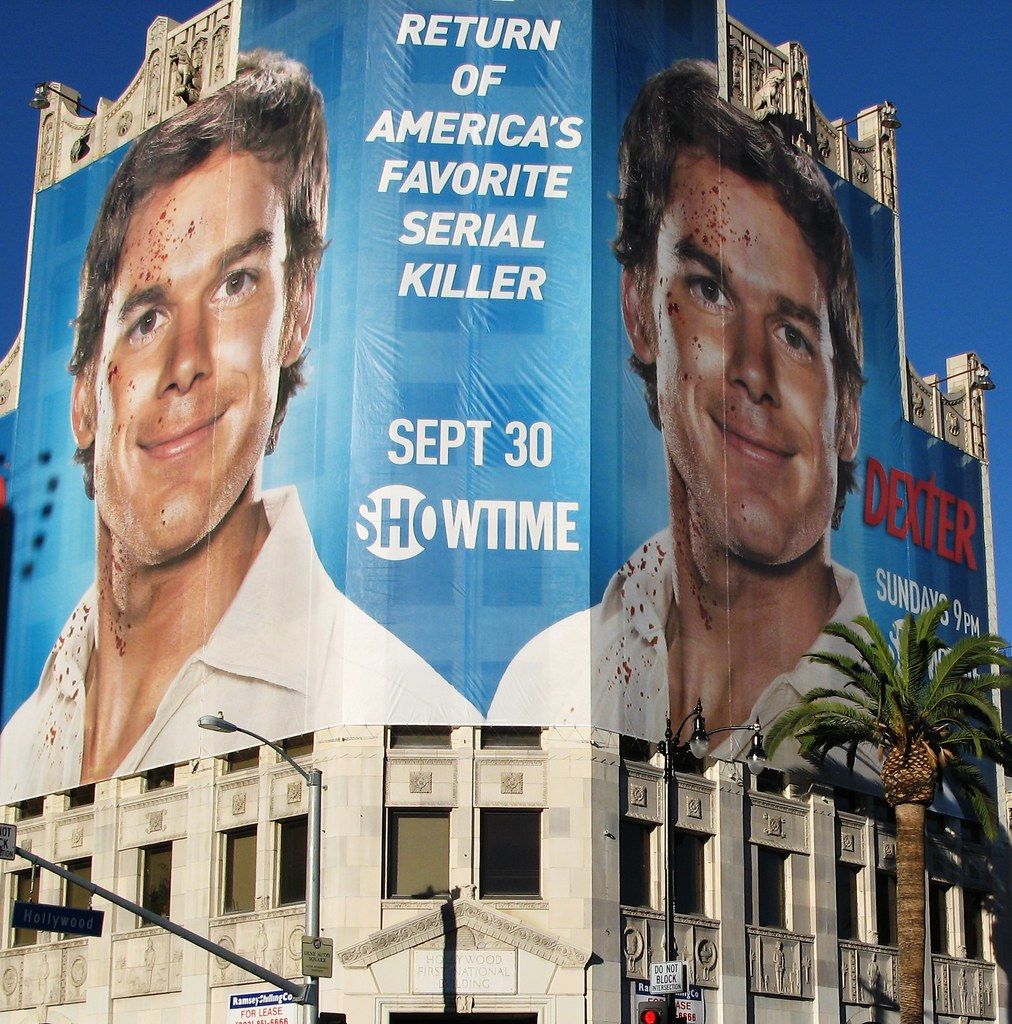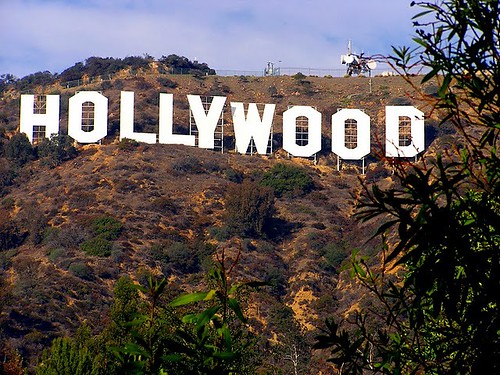
The American Revolution, a watershed moment in human history, is a narrative rich with complex characters, seismic political shifts, and harrowing battles. It’s a story ripe for cinematic exploration, offering filmmakers a canvas to depict the birth of a nation. Yet, despite its inherent drama and profound historical significance, the Revolutionary War has, at times, been surprisingly underserved by Hollywood. Many productions, while aiming for entertainment, have taken considerable liberties with historical accuracy, leading to portrayals that, while perhaps engaging, often miss the mark on factual representation. The challenges of adapting such a pivotal era for the screen are immense, often leading to compromises between historical fidelity and dramatic appeal. For a significant political upheaval, the cinematic and television landscape has largely ignored the nation’s founding, and those productions that have appeared have been, to put it politely, inconsistent.
This isn’t to say that all historical films must adhere to absolute, unyielding accuracy; indeed, some deviation is often necessary for narrative flow and audience engagement. However, when films about such a crucial period fundamentally alter key events, misrepresent historical figures, or create entirely anachronistic scenarios, they run the risk of inadvertently rewriting history for a broad audience. As senior media editors deeply immersed in the nuances of pop culture analysis, we recognize the powerful influence these visual narratives wield, shaping public perception far beyond academic texts. It is in this spirit that we embark on an in-depth analysis, dissecting some of the most prominent Revolutionary War films and television series, scrutinizing where they veered off the historical path and, in some cases, created a timeline all their own.
Our journey through these cinematic interpretations will explore the spectrum of historical inaccuracies, from minor factual missteps to egregious distortions that fundamentally change the understanding of the conflict. We’ll delve into how these choices impacted not only the films themselves but also how audiences perceive the foundational events of American independence. Join us as we shine a spotlight on films that, for better or worse, have carved their own version of the American Revolution, often leaving historians to scratch their heads.

1. **The Rebels (1979)** Stepping into the realm of the truly bizarre, the 1979 made-for-television drama *The Rebels* stands out as a prime example of historical hokum. Based on a historical novel, this three-hour production has earned its place in the “so bad it is good” category, offering a swashbuckling adventure conspicuously lacking in swash, buckle, or indeed, much adventure. It’s a film that manages to parade the great and good of the thirteen colonies across the screen — Washington, Adams, Franklin, Jefferson, Paine, von Steuben, and Hancock — only to have them stumble on and off with no real purpose, delivering ridiculously portentous remarks before vanishing without a trace. The comparison to “Falcon Crest set in the Revolution” is remarkably apt, highlighting its melodramatic and largely unhistorical approach.
The historical accuracy of *The Rebels* is, quite simply, “laugh out loud bad,” a testament to the film’s utter disregard for period authenticity. One of the most glaring visual absurdities noted by viewers are the actors’ “terrible bouffant late 1970s hair styles,” which are jarringly out of place for the 18th century. Furthermore, the costumes are described as so “psychedelic and over the top” that the principal actors look more like “back-up singers in Prince’s group ‘the Revolution’” than actual historical figures from the era. These anachronistic aesthetic choices immediately pull the viewer out of any historical immersion, transforming what should be a serious depiction of a pivotal conflict into an unintentional comedy.
Beyond the visual blunders, the dialogue in *The Rebels* also contributes significantly to its historical and dramatic failures. While a line from Benjamin Franklin, accused of being a womanizer, provides some unexpected wit – “For a man of my advanced years to even consider the pleasures of the flesh much less enjoy it is such a wonder to behold it leaves even my worst critic struck dumb with admiration” – it’s often overshadowed by lines that are far less coherent. Thomas Paine’s declaration, “We have it in our power to create a future beyond imagination,” is met with John Adams’ sagely, yet utterly perplexing, reply: “Aye, but there is the rub Tom. Do we wish to create a future beyond imagination?” This exchange leaves audiences questioning the very intelligence of the script, further cementing the film’s reputation for historical inaccuracy and narrative absurdity.
The sheer lack of historical grounding in *The Rebels* makes it a challenging watch for anyone seeking an informative depiction of the Revolutionary War. While some might find an ironic pleasure in its silliness, the film’s pervasive anachronisms and nonsensical dialogue ensure that it serves as a cautionary tale rather than a historical lesson. It is a film where the entertainment value stems almost entirely from its spectacular failure to grasp even the basic tenets of historical representation, making it a memorable, albeit flawed, entry in the canon of Revolutionary War cinema.
Read more about: Beyond the Encore: 14 One-Hit Wonder Cars That Burned Brightly, Then Vanished Without a Successor
2. **Drums Along the Mohawk (1939)** John Ford’s 1939 film *Drums Along the Mohawk* offers a massive slice of classic Hollywood schmaltz, a melodrama that, while once a staple of rainy Sunday afternoons, presents a largely fictionalized account of the American Revolution’s frontier experience. Starring Henry Fonda as the earnest young Patriot Gilbert Martin and Claudette Colbert as his simpering wife, the wafer-thin plot revolves around a newlywed couple battling the depredations of Indians and Loyalists in the wilds of New York. Despite its charming ensemble cast, including Edna May Oliver and John Carradine, the film’s historical accuracy is, in the main, “dreadful,” particularly when viewed through a modern lens.
The film’s aesthetic choices are among its most significant historical missteps, detaching it from any genuine sense of 18th-century reality. Claudette Colbert’s character, in particular, is dressed and styled as if plucked from her contemporary setting, wearing “hair and make-up straight out of a 1939 Sears, Roebuck catalogue” and “ridiculous ‘fancy Dress’” costumes. Such glaring anachronisms for a leading lady profoundly undermine the film’s attempts at historical immersion. Furthermore, the portrayal of Native Americans is problematic; the text notes, “The only genuine Native American is outfitted as an Apache, not Iroquois,” and white actors playing other natives “whoop” around, firing flaming arrows, engaging in stereotypical and inaccurate depictions of the Iroquois tribes prominent in the New York frontier.
Beyond the visual and character inaccuracies, *Drums Along the Mohawk* also reveals a politically motivated historical distortion. Made just before the start of World War II but released after hostilities had broken out, the film underwent a re-editing process to avoid offending the British, who were then allies. This resulted in the word “Tory” being “overdubbed over the original word ‘British’ whenever a Patriot railed against the enemy.” This deliberate alteration, driven by contemporary international relations, fundamentally shifts the historical narrative, sanitizing the conflict’s complexities by minimizing the direct antagonism towards the British crown in a period film. While the setting of the New York frontier, with its raids by British-allied Seneca tribes and American loyalists, is broadly accurate, the absence of the British themselves is a notable oversight, potentially part of Ford’s reluctance to portray a British villain during a time of looming global conflict.
Ultimately, *Drums Along the Mohawk* is a melodrama whose appeal lies more in its humor and beautiful Technicolor cinematography than in any historical fidelity. It functions more as a “feel-good movie for classic Hollywood buffs” than a reliable source for Revolutionary War enthusiasts. Its historical liberties, from costume and character misrepresentations to politically driven narrative alterations, ensure that it “mess[es] up the timeline” in significant ways, presenting a romanticized and often inaccurate vision of a brutal frontier war.

3. **The Patriot (2000)** For many Americans, Roland Emmerich’s *The Patriot* is synonymous with the American Revolution, yet its popularity stands in stark contrast to its “critical mauling” from historians for its “numerous inaccuracies.” While undeniably a “thrilling piece of cinema” that arguably brings people to the Revolution, its historical worth is considered “pure twaddle” by academics. The film’s narrative, centered on farmer Benjamin Martin (Mel Gibson) driven to lead the colonial militia after a sadistic British officer murders his son, is a powerful dramatic hook but one built on a foundation of significant historical distortion. The character of Martin, known as “the Ghost,” is a composite of figures like Francis Marion, Andrew Pickens, and Daniel Morgan, while his antagonist, Colonel Tavington (Jason Isaacs), is a thinly disguised, exaggerated proxy for the real British dragoon colonel Banastre Tarleton.
The film’s portrayal of Colonel Tavington is perhaps its most notorious historical departure. While the real Tarleton did gain a reputation for aggressiveness and brutality during the Southern Campaign, the film “exaggerates this to the extreme,” crafting a cartoonishly vile villain. This exaggeration culminates in an “entirely fictional church burning scene” where Tavington traps and immolates villagers, a horrific act that critics deem “chilling, but the wrong war,” drawing parallels to the Waffen SS rather than the British military of the 18th century. This scene, in particular, is cited as a malicious inaccuracy, demonstrating a disregard for the historical behavior of British forces, even those with a brutal reputation. The film’s director, Roland Emmerich, being German, should have been “sensitive to the dangers of those who manipulate history,” making this distortion all the more problematic.
Beyond the dramatic villainy, *The Patriot* also commits significant “malicious” historical inaccuracies regarding the institution of slavery. The film deceptively suggests that “slavery was practically nonexistent in South Carolina and not that bad, anyway.” This is a gross misrepresentation of historical reality, as slavery was deeply entrenched and brutal in the Southern colonies. The few enslaved people shown are depicted as “a cheerful lot, all of whom have been given their freedom,” painting a picture far removed from the harsh realities of chattel slavery during the period. Such portrayals actively distort a crucial aspect of American history, sanitizing a painful truth to fit a particular narrative. Even with a historian from the Smithsonian supposedly on set, the film’s historical accuracy score of 4 out of 10 suggests that individual was likely preoccupied elsewhere.
Despite these substantial historical fabrications, the film’s fast pace, engaging performances (especially from Jason Isaacs as Tavington and Tom Wilkinson as Lord Cornwallis), and compelling action sequences have ensured its enduring popularity. However, to approach *The Patriot* as a work of history, one must do so “with your tongue very firmly in cheek,” as the “historical inaccuracies bludgeon you from the very beginning.” While it may succeed as a “summer action movie with a historical gloss,” its significant departures from the factual record mean it fundamentally “messes up the timeline” of the American Revolution for mass audiences, prioritizing spectacle over truth.
Read more about: From Silver Screen Legends to Modern Powerhouses: 14 Hollywood Tough Guys Who Never Backed Down
4. **The Devil’s Disciple (1959)** A film starring Sir Laurence Olivier, Burt Lancaster, and Kirk Douglas, based on a play by George Bernard Shaw, *The Devil’s Disciple* had all the ingredients for a superb cinematic experience. Yet, it surprisingly turned out to be “almost unwatchable,” a stark reminder that star power alone cannot guarantee historical or artistic success. Olivier himself regarded this film as one of his biggest failures, and Shaw famously disliked and disowned the work, sentiments that are difficult to disagree with. The film’s historical accuracy, rated a mere 4 out of 10, is compromised by a series of theatrical and production choices that collectively paint an unconvincing picture of Georgian America during the Revolution.
The visual presentation of *The Devil’s Disciple* immediately signals its detachment from historical reality. The costumes, while an attempt to portray the period, are described as “over the top,” with the “British grenadiers look[ing] more like down-at-heel Hessians” than accurate representations of their historical counterparts. These sartorial misjudgments disrupt the visual authenticity, lending an air of caricature rather than genuine period immersion. Furthermore, the film’s settings betray its limited budget and geographical constraints. The “outside locations clearly reveal they shot the film in the cultivated woods and gentle hills of Hertfordshire rather than the wild, untamed forests of upstate New York,” a significant environmental discrepancy that further disconnects the audience from the supposed American frontier of the Revolutionary era.
The film’s theatrical origins, combined with what is described as a butchered screenplay, contribute to its historical and dramatic failures. Shaw’s “arch dialogue” is portrayed as having been “butchered by the screenplay,” which replaces the original sarcasm with “buffoonery.” This linguistic shift not only diminishes the intellectual depth of the source material but also creates a stilted, unbelievable interaction between characters. The “sets are high school standards,” and the “action sequences unbelievable,” further highlighting the production’s shortcomings. The absence of chemistry between the three legendary stars, who “appear wary of each other’s reputations,” exacerbates the wooden, unartistic theatricality, leaving little room for historical insight or genuine emotional resonance.
Ultimately, *The Devil’s Disciple* is viewable “only as a curiosity,” a perplexing example of how a film with immense talent and potential could produce such “tosh.” Its low historical accuracy stems from a combination of over-the-top costumes, mismatched settings, and a poorly adapted script that fails to capture the essence of its historical period or its celebrated literary source. It stands as a profound illustration of a film that thoroughly “messed up the timeline” not through malicious intent, but through a cascade of unfortunate creative and production choices that rendered its historical portrayal unconvincing.

5. **Revolution (1985)** Despite boasting a world-famous production company (Goldcrest), one of cinema’s best actors (Al Pacino), an Oscar-winning director (Hugh Hudson), and a massive $30 million budget, *Revolution* (1985) is an infamous cinematic “mess.” It should have been a landmark film about the American Revolution, yet it is “difficult even to know where to start with this mess.” The film is a stark reminder that even with significant resources, a fundamentally flawed script and execution can lead to a spectacular historical and artistic failure. While some elements like the art direction, staging, costumes, cinematography, and lighting are “superb” and wouldn’t look out of place in a Stanley Kubrick film, “everything else — script, plot, casting, acting, and dialogue — is so bad it is genuinely painful to watch.”
The film’s historical inaccuracies are deeply rooted in its characterizations and narrative choices. Al Pacino, as the accidental Revolutionary, “mumbles his way incoherently” through his role, failing to convey a believable historical figure. Natasha Kinski is similarly unconvincing, portraying a “radical feminist” who is “unsympathetic and unbelievable,” a characterization that feels anachronistic and forced. Donald Sutherland’s performance is notable for its “most ridiculous British accent ever, veering between Cornish, Cockney, and Yorkshire all within the span of a sentence,” which further undermines any attempt at historical authenticity. These “wooden, one-dimensional characterizations” contribute to a film where “every figure is a stereotype,” preventing any nuanced exploration of the complex personalities and motivations of the Revolutionary era.
Perhaps one of *Revolution’s* most egregious historical “mess ups” is its attempt to inject contemporary political relevance without regard for period accuracy. Shot during the height of the Troubles in Northern Ireland, the film includes a scene where the words “Brits go Home” are “daubed” on the wall of a New York tavern. While this sentiment might have been “accurate in Belfast in 1978,” it is profoundly out of place and anachronistic for “New York in 1778.” Such overt anachronisms break any historical illusion, demonstrating a profound misunderstanding of how to subtly weave social commentary into a period piece without distorting the historical context. The film’s overall historical accuracy is rated a 5, signifying a troubled balance between historical intent and execution.
Watching *Revolution* in its entirety can be a painful experience, with “no plot to speak of” and a duration that leaves viewers “praying for the surrender at Yorktown.” While short clips showcasing its panoramic, beautifully choreographed battle sequences might impress — being “easily the best depictions of Revolutionary battlefield fighting there is” — the full 125-minute runtime exposes its deep narrative and historical flaws. It’s a film that promises much visually but delivers little historically, ultimately failing to provide an informative or coherent depiction of the American Revolution, choosing stereotypes and anachronisms over genuine historical insight.
Read more about: The Indelible Reign of Prince: A Forbes Retrospective on the Musical Genius, Financial Acumen, and Cultural Impact of an Icon
6. **Turn: Washington’s Spies (2014)** The AMC miniseries *Turn: Washington’s Spies*, running for four seasons, has elicited strong reactions, being “admired and loathed in equal measure.” While those unfamiliar with the Culper Spy ring might find themselves immersed in its saga, purists are often infuriated by the liberties the show “undoubtedly takes with historical characters.” Centering on Long Island farmer Abraham Woodhull, the series tells an engaging story of an unlikely group of spies who supposedly “turn” the tide of America’s fight for independence. The show is lauded for its production values, with “everything from the cinematography to the fonts to the costumes is outstanding,” and the costume designer notably took the trouble to portray the Loyalist regiment’s idiosyncratic uniforms correctly down to the crescent moon on the helmet. However, behind this visually impressive facade lies a narrative that significantly “messes up the timeline” and characterizations.
The series’ historical accuracy, rated a 5 out of 10, is particularly challenged by its portrayal of key historical figures. While the show features magnificent performances from its British cast, including Burn Gorman as Major Hewlett, Angus MacFadyen as Robert Rogers, and JJ Feild as John André, the characterizations often diverge from historical fact. The most egregious distortion is perhaps the depiction of Lt. John Simcoe, played by Samuel Roukin, as a “psychotic, cold-blooded Lt. John Simcoe.” In stark contrast to this villainous portrayal, the real Simcoe was, in fact, “one of the best British officers of the war and, far from being a psychotic killer, was an erudite, intelligent soldier who played no little part in ensuring Canada did not become an American state.” This complete transformation of a historical figure into a one-dimensional antagonist serves dramatic convenience but fundamentally misrepresents history.
Another notable inaccuracy concerns Peggy Shippen, played by Ksenia Solo, whose portrayal, while praised for its nuance, includes a significant historical misplacement. The series depicts Peggy Shippen “unaccountably watching his demise from the front row” at John André’s hanging. Historically, she “was not in Tappan at his death.” Such an alteration, though seemingly minor, places a prominent historical figure in a situation she was never in, altering the emotional and factual context of a pivotal event. Furthermore, while Solo’s Peggy is an “impressive study of a woman torn between love for André and duty to her family,” her dialogue occasionally falls into “toe-curling lines” that feel anachronistic or overly melodramatic, such as, “You’re a man who makes his own fate, and I wish to be part of it,” or when handing over a book, “let him know when he holds this book, he will be holding my heart.”
Despite these historical liberties, *Turn* is commended for its engagement as “less a study of espionage than it is of civilians finding themselves accidentally drawn into a war and doing the wrong things for the right reasons.” It succeeds in creating excellent subplots revolving around love and manipulation. However, for those seeking factual historical accounts, the series demands a significant suspension of disbelief, as its many inaccuracies, particularly concerning character portrayals and event placements, ensure that it fundamentally “messes up the timeline” of the Revolutionary War, favoring dramatic storytelling over strict historical fidelity.
7. **April Morning (1988)** *April Morning* (1988) is a film that presents a curious paradox: an outstanding performance by Tommy Lee Jones as Patriot Moses Cooper, overshadowed by an otherwise “mediocre film.” Jones’s compelling portrayal, praised for carrying the production “on his back,” unfortunately culminates in a “criminally underwhelming death scene” on Lexington Green, after which the film’s dramatic impetus largely dissipates. The film then devolves into “little more than a glorified reenactment video, peppered with some of the worst dialogue ever imposed on professional actors.” Despite a screenplay written by James Lee Barrett, known for the Oscar-winning Civil War film *Shenandoah*, and the presence of the late Rip Torn, the overall execution leaves much to be desired, with Torn delivering his “worst-ever performance spouting lines” like, “What is peace without dignity, what is peace without honor? The King’s peace is slavery.”
While *April Morning* boasts a historical accuracy score of 7, indicating some commendable efforts, its narrative choices and character focus contribute to a sense of missed opportunities and a distorted timeline. One positive historical touch noted is Paul Revere’s accurate warning of “the Regulars are coming,” rather than the ubiquitous and anachronistic “British.” Furthermore, the production team took care to differentiate between British grenadiers, battalion, and light infantry uniforms, which are “uniformed accurately,” and their retreat from Concord is praised as “probably the best part of the film.” However, these historical details are frequently undermined by the film’s dramatic emphasis on a “blossoming relationship of two young Lexington villagers” who are described as “annoying and insipid.” This misplaced focus diverts attention from the weightier historical events and the more compelling, historically grounded characters.
The film’s historical presentation is further complicated by its overall atmosphere and narrative choices. While “Lexington looks realistic, even if it isn’t,” the dramatic tension often feels contrived or poorly executed. The decision to kill off Tommy Lee Jones’s character so early is highlighted as a fundamental flaw, as his character, Moses Cooper, delivers the film’s “best soliloquy,” articulating profound sentiments about the shift from British subject to American identity. His paternal annoyance mixed with pride as he teaches his son to fire his musket correctly adds a depth that “none of the other actors imbibe their characters with.” This early loss of the film’s strongest element means that while the initial moment the British arrive on Lexington green is “genuinely thrilling,” and there is “palpable tension as we await ‘the shot heard ‘round the world,’” the production subsequently “dies alongside Tommy Lee Jones.”
In essence, *April Morning* represents a wasted opportunity. Despite pockets of commendable historical accuracy and a standout performance, the film’s narrative decisions, particularly its poor dialogue and the premature departure of its most engaging character, prevent it from delivering a coherent or consistently engaging historical account. It “messes up the timeline” not through overt factual errors in every instance, but by misplacing dramatic emphasis and failing to capitalize on its stronger historical elements, leaving viewers with a fragmented and ultimately unfulfilling portrayal of the Revolution’s opening moments.
Continuing our deep dive into cinematic interpretations of the American Revolution, we explore additional films that, while attempting to capture the spirit of the era, frequently stray from historical accuracy. Each of these productions, despite varying degrees of critical reception and entertainment value, offers a unique case study in how dramatic storytelling can reshape—and sometimes distort—the pivotal events and figures of America’s founding. From biographical dramas to wartime epics, the challenge of balancing historical fact with compelling narrative proves to be a consistent hurdle, often leading to fascinating, albeit flawed, portrayals that leave a lasting impression on popular understanding.
Read more about: Beyond the Headlines: 13 Celebrity Deaths That Still Puzzle Experts and Fans Alike
8. **Benedict Arnold: A Question of Honor (2003)** This biopic offers a compelling, if dramatically condensed, look at the infamous traitor Benedict Arnold, largely carried by Aidan Quinn’s impressive performance in the titular role. Kelsey Grammer as George Washington might seem like an unorthodox casting choice, yet he delivers an excellent portrayal, adding unexpected depth. Flora Montgomery also shines as Peggy Shippen, contributing to a cast that is, for the most part, universally strong, even bringing to life more peripheral figures like Judge Shippen. However, the film struggles significantly with its dialogue, often inserting twentieth-century phrasing that feels jarringly out of place, and it compresses factual events to fit its runtime.
The film’s historical accuracy, rated a 7 out of 10, is commendable in some aspects, particularly in its use of Ireland’s elegant Georgian buildings to stand in for colonial settings, and generally accurate costumes and sets. Yet, its problems largely stem from the truncation of Arnold’s complex career and personality, which inevitably leads to oversimplification. For instance, the film depicts Arnold as a raving madman at Saratoga, running amok with a tomahawk and single-handedly decimating half the British army before being wounded. This dramatic exaggeration stands in stark contrast to historical accounts, which place Arnold on horseback and nowhere near the British works, fundamentally altering a pivotal battle moment for dramatic effect.
Further inaccuracies plague the narrative, such as the snowy siege of Quebec being portrayed in an Irish meadow, highlighting evident budget constraints that forced geographical compromises. The dialogue, particularly in Arnold’s courting of Peggy Shippen, is described as “cringe-worthy,” sounding more like “a drunk teenager at the office Christmas party” than an 18th-century exchange. While these numerous discrepancies, both important and trivial, are present, they are often overshadowed by Quinn’s powerful, bravura performance. The film ultimately asks viewers to approach it as a melodramatic love story rather than a strict historical document, requiring a degree of forgiveness for its historical departures.
9. **The Crossing (2000)** Howard Fast’s novel provides the basis for *The Crossing*, a film that, despite being an A&E made-for-TV-movie, is often overlooked but profoundly impactful. Jeff Daniels delivers a sympathetic and irreverent portrayal of George Washington, a stark contrast to many more reverential depictions. The film focuses intensely on the desperate crossing of the Delaware and the subsequent Battle of Trenton, an often-cinematically challenging sequence that is rendered with excellent cinematography and a strong supporting cast. The screenplay is lauded for its wit and insight, creating a Washington who, for all his ribald remarks and blasphemies, feels genuinely human and relatable.
However, the film’s historical accuracy, rated a 7, isn’t without its notable flaws. One glaring issue is the depiction of the Battle of Trenton occurring in clear weather, rather than the historical snowstorm, significantly altering the environmental context of the arduous campaign. Furthermore, the British soldiers are shown in uniforms that are out of period, a visual misstep that detracts from authenticity. A particularly anachronistic detail is the Rebel oarsmen singing “Sally Brown,” a sea shanty popular in the early nineteenth century, rather than a tune from the Revolutionary era, clearly ‘messing up the timeline’ for attentive viewers.
Beyond visual and auditory missteps, some of the film’s most dramatic scenes, though engaging, are entirely fictional. Washington’s upbraiding of General Horatio Gates at dinner and his visit to the dying Hessian colonel Rall are two prominent examples of fabricated events that, while enhancing the narrative, never took place. These instances highlight the film’s willingness to invent dramatic moments for impact. Despite these inaccuracies, which never truly detract from the overall experience, *The Crossing* manages to maintain an authentic atmosphere, offering a compelling and informative look at a crucial moment in the war. It’s a film that earns its stripes for entertainment and insight, even as it takes liberties with specific historical details.
Read more about: Beyond the Leads: 15 Scene-Stealing Supporting Performances That Undeniably Outshined the Stars
10. **Mary Silliman’s War (1994)** A truly underrated gem, *Mary Silliman’s War* stands as one of the most penetrating portraits of the American Revolution, yet sadly remains largely unseen by many. Unlike most productions that fixate on grand battles or political maneuvering, this film wisely centers on the deeply personal tensions and injustices that tear apart a small community in rural Connecticut amidst civil war. Its unique strength lies in its narrative, which is told from a woman’s perspective—Mary Silliman—as she desperately tries to rescue her attorney husband, who has been condemned to death in retaliation for the proposed hanging of two Loyalists. The absence of big names or contrived love interests allows the intelligent and thoughtful dialogue to become the true star.
Considerable effort was invested in crafting a convincing social portrait, allowing the film to delicately touch upon complex issues of feminism, slavery, and loyalty, albeit with varying degrees of success. This commitment to depicting societal nuances of the era sets it apart. The film’s historical accuracy scores an impressive 9, reflecting excellent attention to detail in costume, dialogue, and lighting, all of which contribute to an authentic feel that genuinely transports the viewer to the period. Such fidelity is rare and commendable, especially for a production exploring a lesser-known facet of the Revolution.
However, even with its high marks for accuracy, the film, at times, leans heavily into its educational documentary aspects, potentially sacrificing some entertainment value for a first-time viewer expecting a more traditional drama. While the scholarship never overwhelms the narrative, the film’s low-key, intelligent approach is more suited for history purists with a notepad than casual movie buffs with a popcorn bucket. It’s a production that proves that powerful storytelling about the Revolution doesn’t require massive action sequences or grand political pronouncements; sometimes, the most revealing narratives emerge from the quiet struggles and personal sacrifices within a torn community.
11. **John Adams (2008)** The HBO miniseries *John Adams*, based on David McCullough’s Pulitzer Prize-winning biography, stands as a towering achievement that proves historical accuracy and popular appeal are not mutually exclusive. It avoids the common pitfall of overly reverential portrayals of Founding Fathers like Washington, Franklin, and Jefferson, instead focusing on one of the more ambiguous figures of the Revolution. This approach allowed HBO to begin with a relatively blank canvas, resulting in a compelling character study. Starring Paul Giamatti, the production values are simply unsurpassed, with frigate masts looming realistically, halyards clanking authentically, and cobblestones glistening under period-appropriate lighting, creating an immersive historical world.
The dialogue is equally impressive, with actors delivering lines that possess an authentic eighteenth-century cadence. This is a crucial detail often missed by other period dramas, many of which inject modern phrasing that immediately pulls the audience out of the historical setting. *John Adams* meticulously avoids such anachronisms, ensuring that the language feels genuinely of its time. The series brilliantly depicts complex historical events, such as a customs agent being tarred and feathered in Boston Harbor, a scene that vividly brings home the excruciating reality of a punishment too often humorously portrayed, underscoring the raw, brutal nature of revolutionary fervor.
With a historical accuracy score of 9, the series sets a new benchmark for authenticity in television history. While a production of this length is bound to have minor inaccuracies, its overall commitment to the historical record is extraordinary. One of its most powerful moments, Adams’s royal audience with George III, is a precise, poetic, and heartbreaking scene, made even more impressive by being a verbatim portrayal of the actual exchange. Tom Hollander’s brilliant performance as the monarch conveys angst, despair, and acceptance without uttering a single word, demonstrating the profound depth and fidelity to historical emotional truth that defines this exceptional miniseries.
Read more about: 16 Iconic Movie & TV Teen Roles Played by Much Older Actors
12. **John Paul Jones (1959)** This biographical drama attempts to chronicle the life of the titular naval captain, Robert Stack, from his early years in Scotland through his death in France. While the film’s chronology generally follows his career with reasonable accuracy, it significantly veers off course in its portrayal of Jones’s character, leaning heavily into sanitization. This is a recurring issue in historical biopics, where the complexities and moral ambiguities of real figures are often smoothed over to create a more heroic or palatable protagonist. Such artistic choices inevitably dilute the historical truth, offering a romanticized version rather than a factual one.
One of the most notable historical departures concerns the death of a mutinous crew member in the West Indies, an event that predates Jones’s flight to America to escape arrest. The film depicts this as an unfortunate accident, painting Jones in a more favorable light. However, historical evidence strongly suggests that Jones most likely intentionally killed the crewman, a detail that fundamentally alters our understanding of his character and his early motivations. This deliberate softening of a crucial, darker aspect of his past is a clear instance of the film ‘messing up the timeline’ of his personal narrative.
Further blurring the lines between fact and fiction, much of the film’s plot revolves around a fictional romance between Jones and a woman named Aimee de Tellison, who is portrayed as an illegitimate daughter of King Louis XVI. This entire romantic subplot appears to be an invention, serving as a dramatic device rather than reflecting any historical reality. The inclusion of such a prominent fictional relationship not only distorts Jones’s personal history but also introduces a fantastical element that distracts from the genuine historical challenges and triumphs of his naval career. Ultimately, *John Paul Jones* prioritizes a sanitized, romanticized hero over the complex, often ruthless historical figure.

13. **The Scarlet Coat (1955)** *The Scarlet Coat* is a historical drama that plunges into the intrigue and espionage of the Revolutionary War, centering on the fictional Major John Bolton, portrayed by Cornel Wilde. While Bolton is presented as a Continental Army officer and spymaster, the character is a fictionalized portrayal, loosely based on historical figures like Benjamin Tallmadge. The film’s premise involves Bolton working undercover within the British Army, where he, by chance, strikes up a friendship with the real-life Major John André. This invented relationship serves as a dramatic fulcrum, allowing Bolton to supposedly uncover André’s plans to sabotage West Point’s defenses.
The reliance on a fictionalized protagonist and an invented core relationship immediately flags *The Scarlet Coat* as a film that takes considerable liberties with historical accuracy. While such creative license can make for compelling drama, it also means that the narrative’s central events and character interactions are fundamentally disconnected from the factual record. The creation of Major Bolton and his espionage exploits, particularly his intimate involvement with André’s betrayal, simplifies complex historical networks and motivations into a more digestible, heroic narrative, rather than reflecting the intricate reality of spy operations during the war.
The film’s historical inaccuracies extend to how it frames pivotal events, using the fictional Bolton as a catalyst for discoveries that, in reality, unfolded through different means and different historical actors. By constructing a narrative around a fabricated hero, *The Scarlet Coat* reassigns historical agency and twists the factual timeline to fit its dramatic needs. While it offers an entertaining glimpse into the shadowy world of wartime espionage, audiences must be aware that the film prioritizes an engaging, if manufactured, plot over a strict adherence to the historical record, effectively ‘messing up the timeline’ by inserting a fictitious protagonist at the heart of real events.

14. **Johnny Tremain (1957)** Adapted from the beloved 1943 children’s book, Disney’s *Johnny Tremain* tells the inspiring story of an apprenticed silversmith who, after injuring his hand, finds himself drawn into the Sons of Liberty and the nascent Revolutionary War. While designed for a younger audience, the film nevertheless attempts to depict the pivotal early years of the conflict, making it a gateway for many to American history. Its narrative follows Tremain as he navigates the tumultuous political landscape of Boston, witnessing firsthand the burgeoning resistance against British rule and becoming an active participant in the struggle for independence.
However, despite its educational intent and engaging storyline, *Johnny Tremain* does fall prey to a few common historical errors that affect its accuracy. The most frequently cited inaccuracy is a scene where Paul Revere cries out, “The Redcoats are coming,” during his famous midnight ride. This iconic phrase, while deeply ingrained in popular culture, is historically inaccurate. Revere would have warned that “the Regulars are coming,” as the colonists still largely considered themselves British subjects and did not yet universally use the term “Redcoats” in this context. This small but significant detail highlights how popular narratives can inadvertently alter historical events.
This particular misstep, though seemingly minor, is a prime example of how even well-intentioned historical films can ‘mess up the timeline’ by perpetuating widely accepted, but incorrect, phrases or images. While the film’s overall message of patriotism and the fight for freedom remains strong, such anachronistic dialogue serves as a reminder that cinematic portrayals, especially those targeting younger audiences, require careful scrutiny for factual fidelity. Ultimately, *Johnny Tremain* serves as a charming and accessible introduction to the Revolution, but one where viewers, particularly educators, should be mindful of its deviations from the precise historical record.
As we conclude our extensive examination of Revolutionary War films, it’s abundantly clear that the cinematic landscape is a complex tapestry woven with threads of historical fact and dramatic fiction. From the sweeping, often inaccurate epics to the meticulously crafted miniseries, each production offers a unique lens through which to view America’s founding. While some films, through sheer ambition or creative missteps, undeniably ‘messed up the timeline,’ they all, in their own way, contribute to our ongoing dialogue with history. It’s a powerful testament to the enduring allure of the American Revolution that filmmakers continue to revisit this defining era, reminding us that even in their flaws, these visual narratives spark interest and conversation, inviting us all to scrutinize the past with a critical, yet entertained, eye. The journey through these cinematic battles and political intrigues ultimately underscores the vital importance of distinguishing between the silver screen’s compelling drama and the unvarnished truths of history.





